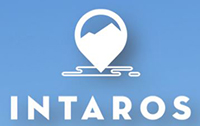Enhancement of multidisciplinary in situ observing systems [Months: 6-54]
IO PAN, NERSC, UiB, IMR, MISU, AWI, DTU, AU, GEUS, FMI, USFD, MPG, UPM, UHAM, OU, NIVA, CNRS, GFZ
The WP3 main activities will focus on developing and implementing innovative solutions and new technologies to fill selected gaps identified in the existing observing systems. Novel instruments and sampling methods will be further integrated with mature components of existing observatories to increase temporal and geographic coverage of in situ observational data in the Arctic.
Three reference sites have been selected as providing critical data to understand ongoing climate and environmental changes and their consequences for the Arctic: (Task3.1) Costal Greenland - key location for freshwater output from the Greenland ice sheet to the ocean, (Task3.2) North of Svalbard from the shelf to the deep Nansen Basin - the hot-spot for mass, heat and biological energy input to the European Arctic, and (Task3.3) Fram Strait - the critical gateway for exchanges between the Arctic and the World oceans. The key components in two distributed observatories: (Task3.4) for ocean and sea ice and (Task3.5) for terrestrial and atmospheric measurements will be extended to include multidisciplinary observations, still missing from the central Arctic and remote coastal areas.In Russia, RIHMI-WDC runs a renewal programme (Roshydromet 2) to upgrade and modernize their observing systems, which will be linked to Task 3.4 and 3.5.
To optimize the fieldwork effort and integrity of new multidisciplinary data, we will build on and effectively extend infrastructure already existing in selected reference sites and distributed observatories. Based on WP 2 results we will plan how to optimally fill gaps in selected systems for ocean, sea ice, atmosphere and natural hazards in the early phase of the project. New sensors and integrated platforms and experimental setups will be implemented during a twoyear long deployment phase with an aim for sustained use in a future iAOS. New collected data will be preprocessed under WP3 to provide standardized data sets ready for integration in WP5, demonstration actions in WP6, and for the consultations with stakeholders (WP7).
The key themes addressed in this work package are: Atmosphere (A), Ocean (O), Cryosphere (C), Biogeochemistry (BGC), Natural hazard (NH), and Terrestrial observations (T). All activities undertaken under each Task will be implemented in a three-phase process: Phase 1: Development of new technologies and integration of multidisciplinary sensors for autonomous in situ monitoring systems in the Arctic (M1-18).
Phase 2: Implementation of integrated multidisciplinary sensors and platforms for year-round measurements in the selected reference sites and distributed observatories (M19-48)
Phase 3: Preparation and delivery of preprocessed new data to WP5 and WP6 (M19-54, overlap with Phase 2 due to the near real time data delivery from some sensors).
The data collected under WP3 will contribute to ongoing and future long-term initiatives (e.g. OSPAR, SAON, YOPP). Technical recommendations, based on experience gained from INTAROS deployments and synthetized in Task 3.0 will contribute to the WP1 roadmap for the future sustained Arctic observing system.
WP3 Enhancement of multidisciplinary in situ observing systems | ||||
| Workpackage tasks | Task leader | |||
Task 3.0 Scientific and operational coord | A. Beszczynska-Möller, IOPAN | |||
Task 3.1 Coastal Greenland | A. P. Ahlstrøm, GEUS | |||
Task 3.2 North of Svalbard | T. Johannessen. UiB Geophys. | |||
Task 3.3 Fram Strait | T. Soltwedel, AWI | |||
Task 3.4 Distributed: ocean and sea ice | A. Beszczynska-Möller, IOPAN | |||
Task 3.5 Distributed: atmosphere / land | M. Göckede, MPG | |||
